Growing Brussel sprouts in your own garden can be a rewarding experience. Not only do you get to watch these tiny seeds transform into tall stalks adorned with sprouts, but you also get to enjoy the fruits (or should I say vegetables?) of your labor.
Brussels sprouts have a long growing season and thrive in cooler temperatures. They are typically planted in early spring for a summer harvest or in mid-summer for a fall or early winter harvest. The ideal temperature range for growing Brussels sprouts is between 45-75°F (7-24°C). They can tolerate frost and the flavor often improves after a light frost. The plants take about 80-100 days to reach maturity, but the exact timing can vary based on the specific variety and growing conditions. It’s important to note that Brussels sprouts require full sun and well-drained soil to grow successfully.
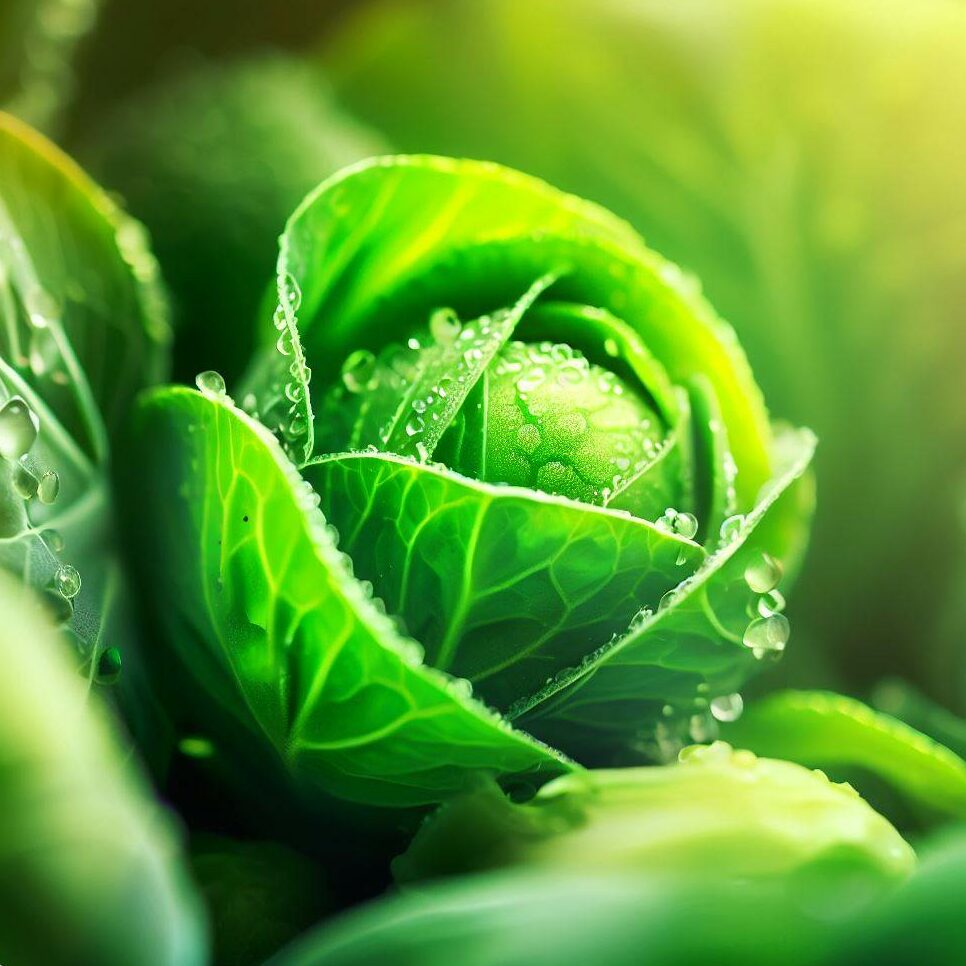
Brussel sprouts are packed with nutrients, including Vitamin K, Vitamin C, and fiber, making them a healthy addition to any meal. But the benefits don’t stop at the dinner table. Gardening, including growing Brussel sprouts, can be a therapeutic activity. It allows you to connect with nature, get your hands a little dirty, and enjoy the satisfaction of nurturing a plant from seed to harvest.
Understanding the Brussel Sprouts Growing Season
First things first, let’s talk about what a growing season is. In the simplest terms, a growing season is the period of the year when conditions are just right for plants to grow. For our little green friends, the Brussel sprouts, this season is particularly important.
Brussel sprouts prefer the cooler weather, making them a perfect candidate for a fall or even a winter garden in milder climates.
The best time to plant Brussel sprouts is typically late summer or early fall, depending on your local climate. This timing allows them to mature as the weather cools, which is key to developing their sweet, nutty flavor.
Brussel sprouts typically take about 80 to 100 days to reach maturity.
🌱 Sprout Secrets: Start counting the days from when you transplant your seedlings into the garden, not from the day you sow the seeds. 🌱
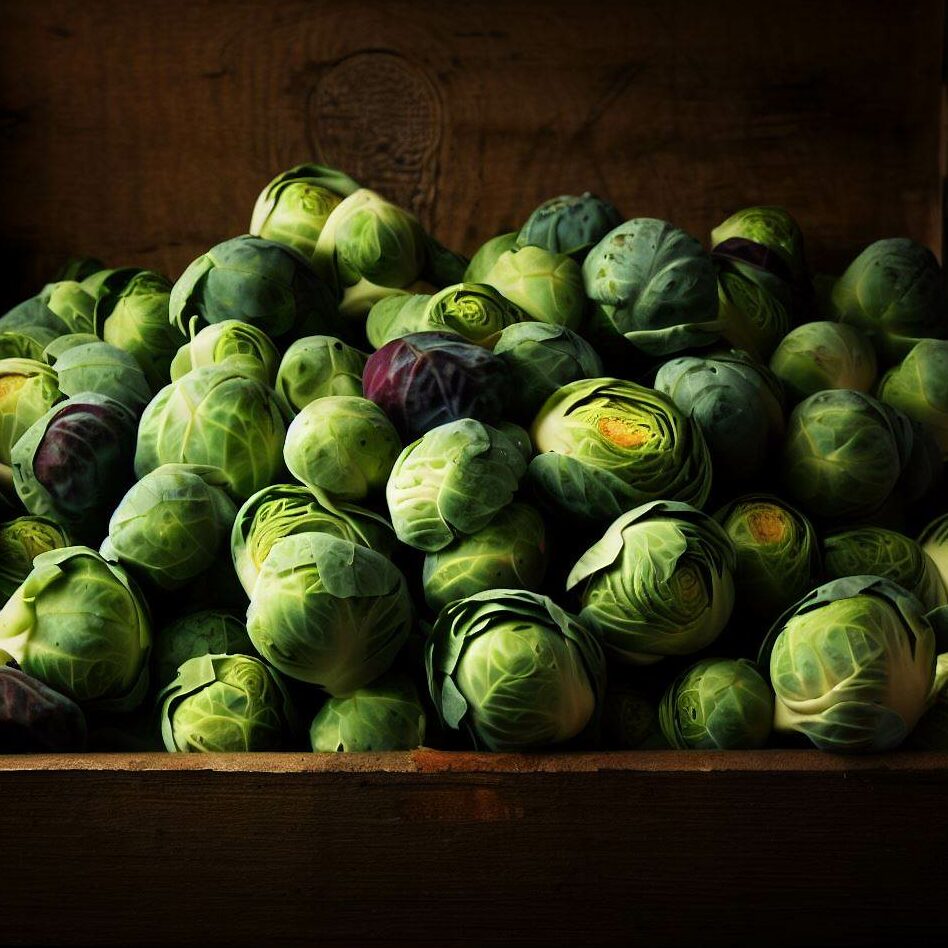
During this growing season, your sprouts will go through a fascinating transformation. They start as tiny seeds, sprout into seedlings, and eventually grow into tall stalks with sprouts nestled in the leaf axils. It’s a sight to behold!
Remember, every garden, every climate, and every gardener is unique. Your Brussel sprouts growing season might look a little different than your neighbor’s, and that’s okay. The key is to understand your local conditions and adjust your planting schedule accordingly.
🌱 Sprout Secrets: Keep a garden journal to track your planting dates, weather conditions, and observations. It’s a great way to learn from each growing season and improve your gardening skills. 🌱
Planting Brussel Sprouts
Here’s a step-by-step guide on how to plant Brussel sprouts:
- Choose Your Seeds: Start by selecting high-quality Brussel sprouts seeds from a reputable source. Look for varieties that are suited to your local climate and soil conditions.
- Start Your Seeds Indoors: Brussel sprouts have a long growing season, so it’s best to start your seeds indoors about 6 to 8 weeks before the last expected spring frost. Sow the seeds in a seed-starting mix and keep them in a warm, well-lit area.
- Transplant Seedlings: Once your seedlings have grown to about 2 to 3 inches tall and have at least two sets of true leaves, they’re ready to move to the great outdoors. Harden off your seedlings by gradually exposing them to outdoor conditions over a week.
- Prepare Your Garden Bed: Brussel sprouts prefer well-drained, fertile soil with a pH between 6.0 and 7.0. Enrich your garden bed with compost or well-rotted manure before planting.
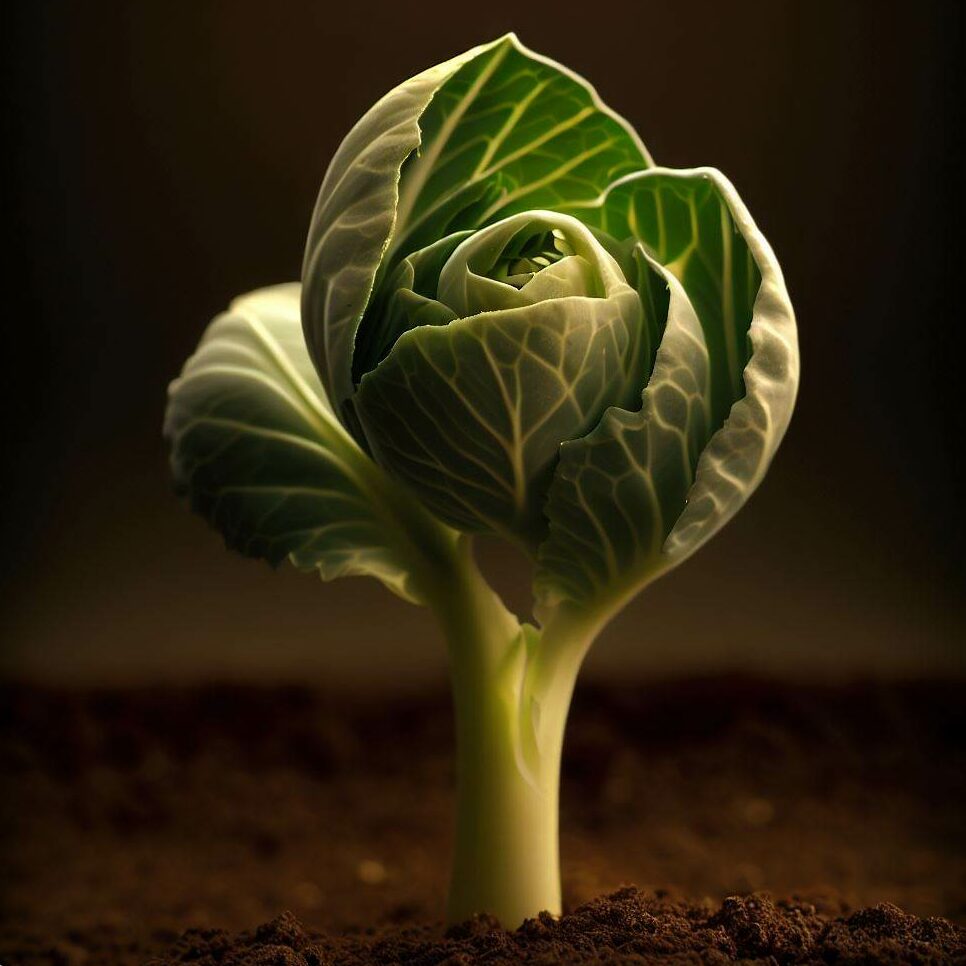
🌱 Sprout Secrets: Brussel sprouts are heavy feeders. Consider applying a balanced vegetable fertilizer according to package instructions to give your plants a nutrient boost. 🌱
- Plant Your Seedlings: Dig a hole deep enough to cover the roots of the seedling. Place the seedling in the hole, backfill with soil, and firm gently.
- Space Your Plants: Proper spacing is crucial for healthy growth. Plant your Brussel sprouts about 18 to 24 inches (45 to 60 cm) apart in rows that are about 30 to 36 inches (75 to 90 cm) apart. This gives them plenty of room to grow and ensures good air circulation to prevent disease.
- Water and Mulch: After planting, water your Brussel sprouts well and apply a layer of mulch to conserve moisture and suppress weeds.
Keep an eye on your seedlings. If they seem leggy or weak, they might not be getting enough light. Consider using a grow light to supplement natural light.
Caring for Your Brussel Sprouts Throughout the Growing Season
Here’s how to care for your Brussel sprouts during their growing season:
- Watering: Brussel sprouts love a good drink. Keep the soil consistently moist, but not waterlogged. A good rule of thumb is to water deeply once a week, or more often during dry spells.
- Feeding: As I mentioned earlier, Brussel sprouts are heavy feeders. A balanced vegetable fertilizer can give your plants the nutrients they need to thrive. Apply according to package instructions every 4 to 6 weeks during the growing season.
- Weeding: Keep the area around your Brussel sprouts free of weeds. Weeds compete with your plants for nutrients and water, so it’s best to show them the door.
- Pest Control: Watch out for common pests like cabbage worms and aphids. Handpick any pests you see and consider using organic pest control methods if necessary.
- Support: Brussel sprouts can grow quite tall and may need some support. A simple stake or garden trellis can help keep your plants upright and happy.
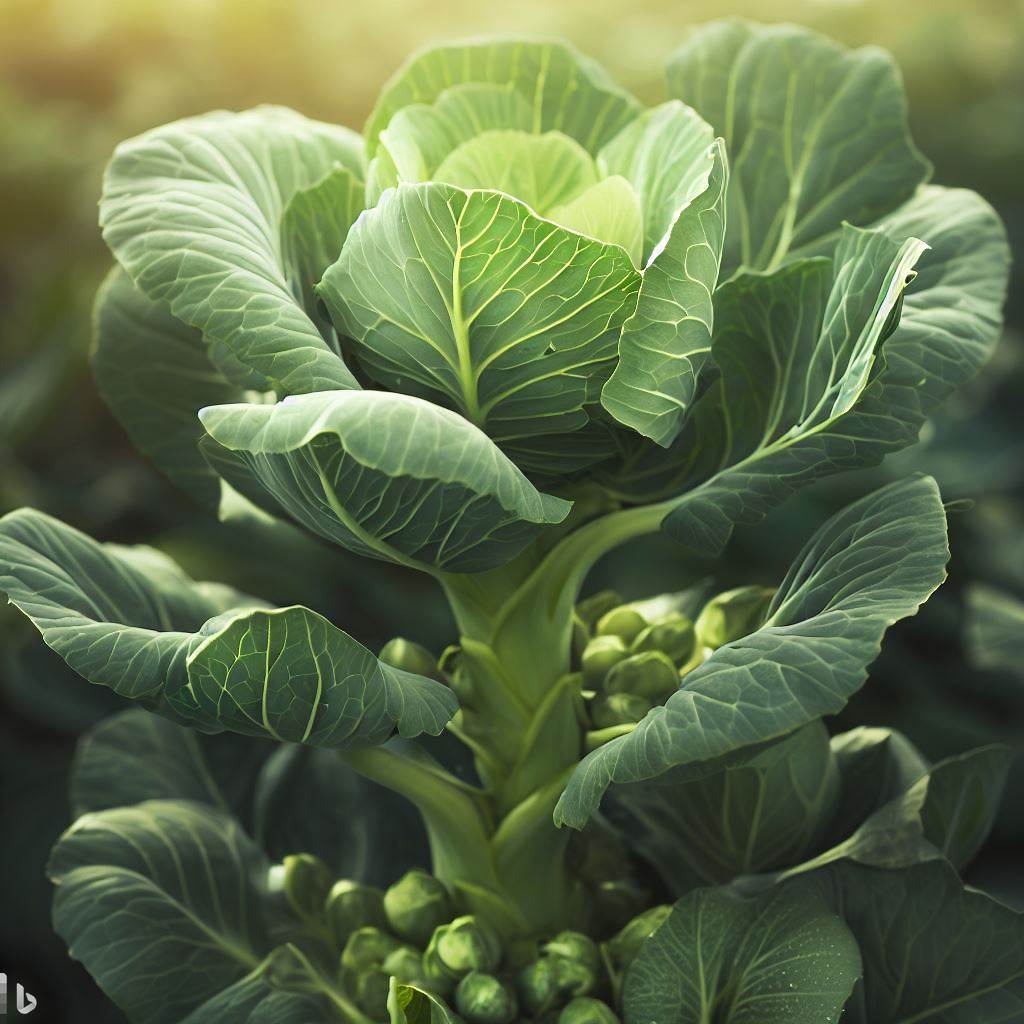
Brussel Sprout Q&A
Q: Can Brussel sprouts grow during winter?
A: Yes, Brussel sprouts are hardy plants that can tolerate frost. In fact, a touch of frost can actually improve their flavor. So, don’t worry if winter arrives before your sprouts are ready to harvest. They’ll be just fine.
Sprout Secrets: If you live in a region with harsh winters, consider using a row cover or cold frame to protect your Brussel sprouts from extreme cold.
Q: What type of soil is best for brussel sprouts?
A: Brussel sprouts prefer well-drained, fertile soil with a pH between 6.0 and 7.5.
Q: What’s the optimal temperature for Brussel sprouts growth?
A: Brussel sprouts prefer cool temperatures, With the ideal range being between 45°F (7°C) and 75°F (24°C).. They can tolerate higher temperatures, but they may not produce as well if the weather gets too hot.
🌱 Sprout Secrets: If you’re growing Brussel sprouts in a hot climate, consider using a shade cloth to protect your plants from the intense afternoon sun. 🌱
Q: What pests commonly affect brussel sprouts?
A: Common pests include cabbage worms, aphids, and flea beetles.
Q: Can I eat the leaves of my brussel sprouts plant?
A: Yes, brussel sprouts leaves are edible and can be cooked like collard greens.
Harvesting Your Brussel Sprouts
After months of nurturing your Brussel sprouts, the moment of truth finally arrives. It’s harvest time! This is the moment when all your hard work pays off, and you get to reap the fruits (or in this case, sprouts) of your labor. But how do you know when your Brussel sprouts are ready to be harvested? And how do you go about harvesting them?
Brussel sprouts are usually ready to harvest when the tiny heads are firm, green, and about 1 to 2 inches in diameter. You’ll notice that the lower sprouts mature first, so start harvesting from the bottom of the stalk and work your way up.
🌱 Sprout Secrets: Don’t rush to harvest all your sprouts at once. They can stay on the plant for several weeks, and a touch of frost can actually improve their flavor. 🌱
Now, onto the how. Harvesting Brussel sprouts is a simple process. Here’s how to do it:
- Choose the Right Tool: A sharp pair of garden shears or a knife is all you need to harvest Brussel sprouts.
- Cut the Sprout: Hold the sprout steady with one hand and cut it off the stalk with your tool of choice. Try to leave as little stem on the sprout as possible.
- Check the Sprout: Examine the cut sprout. It should be firm and green, with tightly packed leaves. If it’s yellow or loose, it’s overripe and not as tasty.
- Store Your Harvest: Brussel sprouts can be stored in the refrigerator for a few weeks. Just place them in a plastic bag and keep them in the crisper drawer.
🌱 Sprout Secrets: If you have a bumper crop, consider blanching and freezing your sprouts. They’ll keep in the freezer for up to a year. 🌱
Harvesting your Brussel sprouts is a rewarding experience. There’s nothing quite like the feeling of plucking a sprout from the stalk, knowing that you nurtured it from a tiny seed.
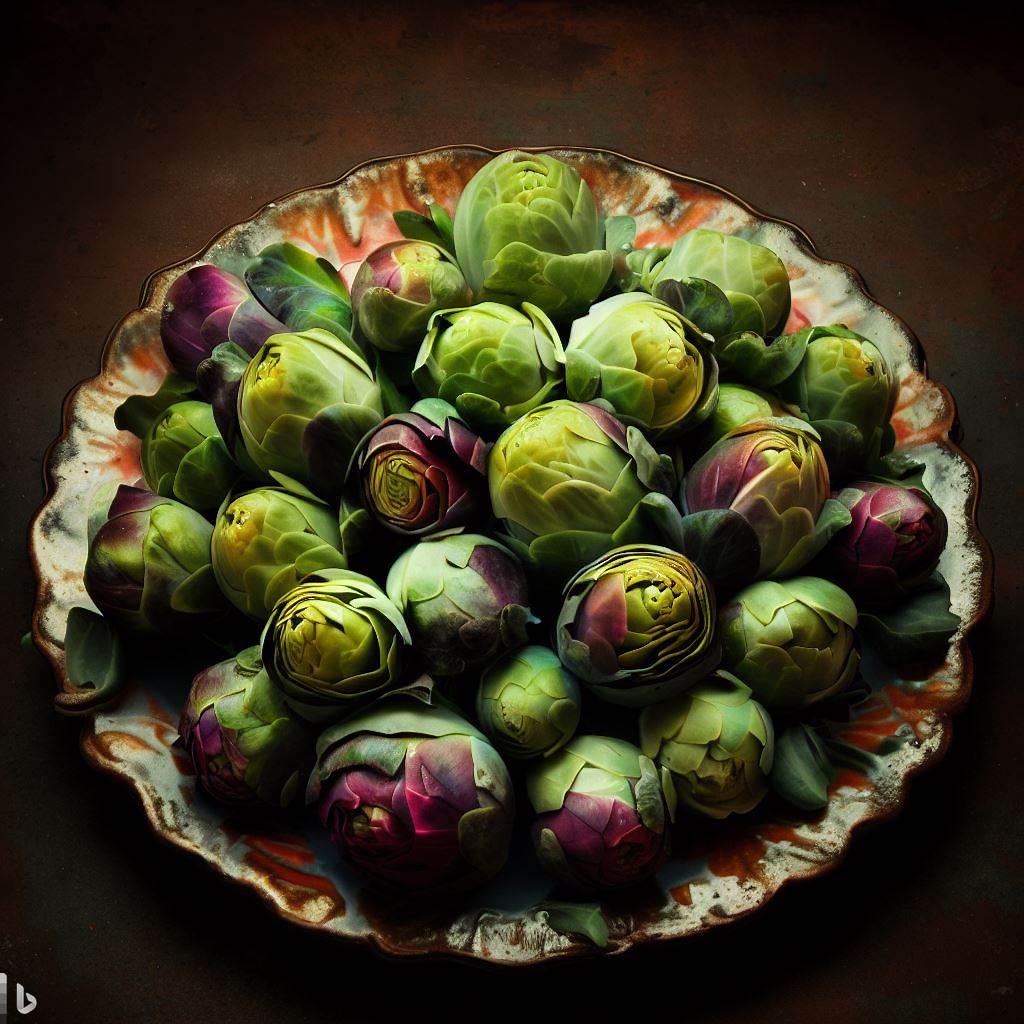
Additional Tips for Growing Brussel Sprouts
Growing Brussel sprouts can be a rewarding experience, but like any gardening endeavor, it comes with its own set of challenges. Here are some additional tips to help you navigate the world of Brussel sprouts gardening.
First off, let’s talk about growing Brussel sprouts indoors and in pots. Yes, it’s possible! If you’re short on outdoor space or just want to bring some greenery indoors, here’s how to do it:
- Choose the Right Pot: A deep pot with good drainage is essential. Brussel sprouts have a robust root system, so give them plenty of room to grow.
- Use Quality Soil: A well-draining potting mix enriched with compost or organic matter will keep your indoor sprouts happy.
- Provide Plenty of Light: Brussel sprouts love the sun. Place your pot near a south-facing window or under grow lights.
- Monitor Watering: Indoor plants can dry out quickly, so keep an eye on the soil moisture. But remember, Brussel sprouts don’t like wet feet, so avoid overwatering.
🌱 Sprout Secrets: Rotate your pot every few days to ensure all sides of the plant get equal exposure to light. 🌱
Next, let’s discuss the perennial nature of Brussel sprouts. While they’re typically grown as annuals, Brussel sprouts are actually biennials. This means they complete their life cycle over two years. In the first year, they produce the delicious sprouts we love, and in the second year, they flower and set seed. If you’re interested in seed saving, let a few of your plants go to seed in their second year.
Finally, let’s tackle some common Brussel sprouts growing problems. Like any plant, Brussel sprouts can encounter issues like pests, diseases, and nutrient deficiencies. Here are a few tips to keep your plants healthy:
- Pest Control: Watch out for cabbage worms and aphids. Handpick pests or use organic pest control methods if necessary.
- Disease Prevention: Practice crop rotation and keep your garden clean to prevent diseases like clubroot and black rot.
- Nutrient Management: Yellowing leaves can indicate a nutrient deficiency. Use a balanced vegetable fertilizer to keep your plants well-fed.
🌱 Sprout Secrets: If your sprouts are loose or blown, it could be due to high temperatures or nutrient imbalances. Try providing some shade during hot weather and ensure your plants are getting a balanced diet. 🌱
The key to a successful harvest lies in understanding the growing season, providing the right care, and, most importantly, embracing the journey with patience and joy.
The satisfaction of harvesting your own homegrown sprouts is worth every bit of effort.
